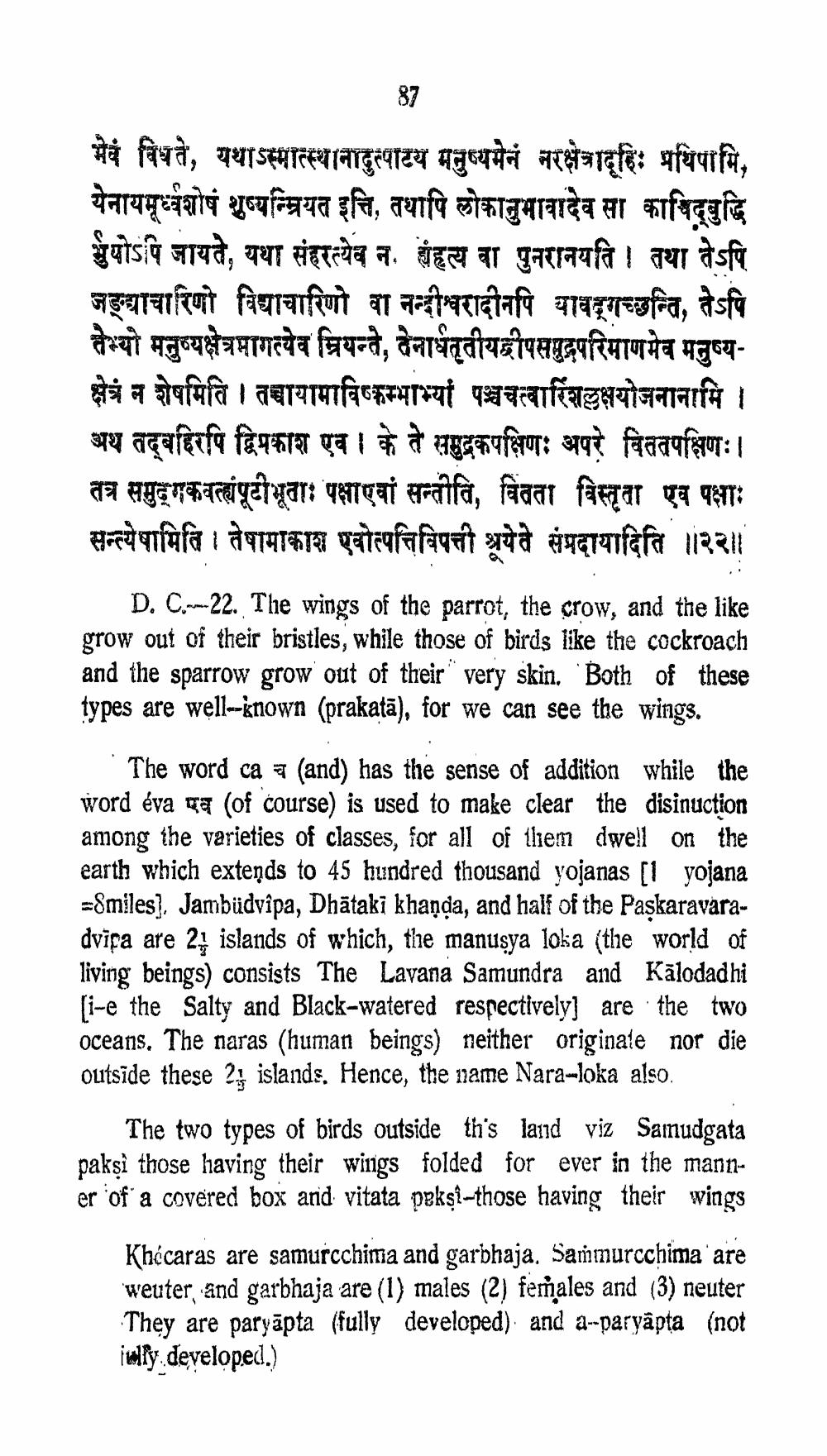________________
मेवं विधते, यथाऽस्मात्स्थानादुत्पाटय मनुष्यमेनं नरक्षेत्राहिः भविषामि, येनायमूर्ध्वशोषं शुष्यन्मियत इत्ति, तथापि लोकानुमावादेव सा काषिबुद्धि भुयोऽपि जायते, यथा संहरत्येव न. ह्यहृत्य वा पुनरानयति । तथा तेऽपि जयाचारिणो विधाचारिणो वा नन्दीश्वरादीनपि यावद्गच्छन्ति, तेऽपि तेभ्यो मनुष्यक्षेत्रमागत्येव म्रियन्ते, तेनातृतीयद्वीपसमुद्रपरिमाणमेव मनुष्यक्षेत्र न शेषमिति । तचायामाविष्कम्भाभ्यां पञ्चचत्वारिंशल्लक्षयोजनानामि । अथ तद्वहिरपि द्विप्रकाश एव । के ते' समुद्रकपक्षिणः अपरे विततपक्षिणः । तत्र समुद्गकवांपूटीभूताः पक्षाएवां सन्तीति, वितता विस्तृता एव पक्षाः सन्त्येषामिति । तेषामाकाश एवोत्पत्तिविपत्ती येते संप्रदायादिति ॥२२॥
D. C.---22. The wings of the parrot, the crow, and the like grow out of their bristles, while those of birds like the cockroach and the sparrow grow out of their" very skin. Both of these types are well-known (prakatā), for we can see the wings.
The word ca 7 (and) has the sense of addition while the word éva va (of course) is used to make clear the disinuction among the varieties of classes, for all of them dwell on the earth which extends to 45 hundred thousand yojanas [l yojana =8miles]. Jambudvipa, Dhataki khanda, and half of the Paskaravaradvira are 21 islands of which, the manusya loka (the world of living beings) consists The Layana Samundra and Kalodadhi [i-e the Salty and Black-watered respectively] are the two oceans. The naras (human beings) neither originale nor die outside these 24 islands. Hence, the name Nara-loka also.
The two types of birds outside th's land viz Samudgata pakşî those having their wiligs folded for ever in the manner of a covered box and vitata pekşi-those having their wings
Khécaras are samurcchima and garbhaja. Sammurcchima are weuter, and garbhaja are (1) males (2) females and (3) neuter They are paryapta (fully developed). and a--paryapta (not ielly.developed.)




